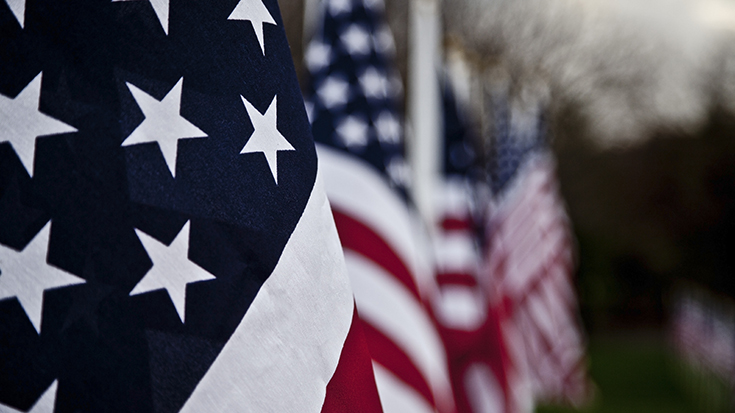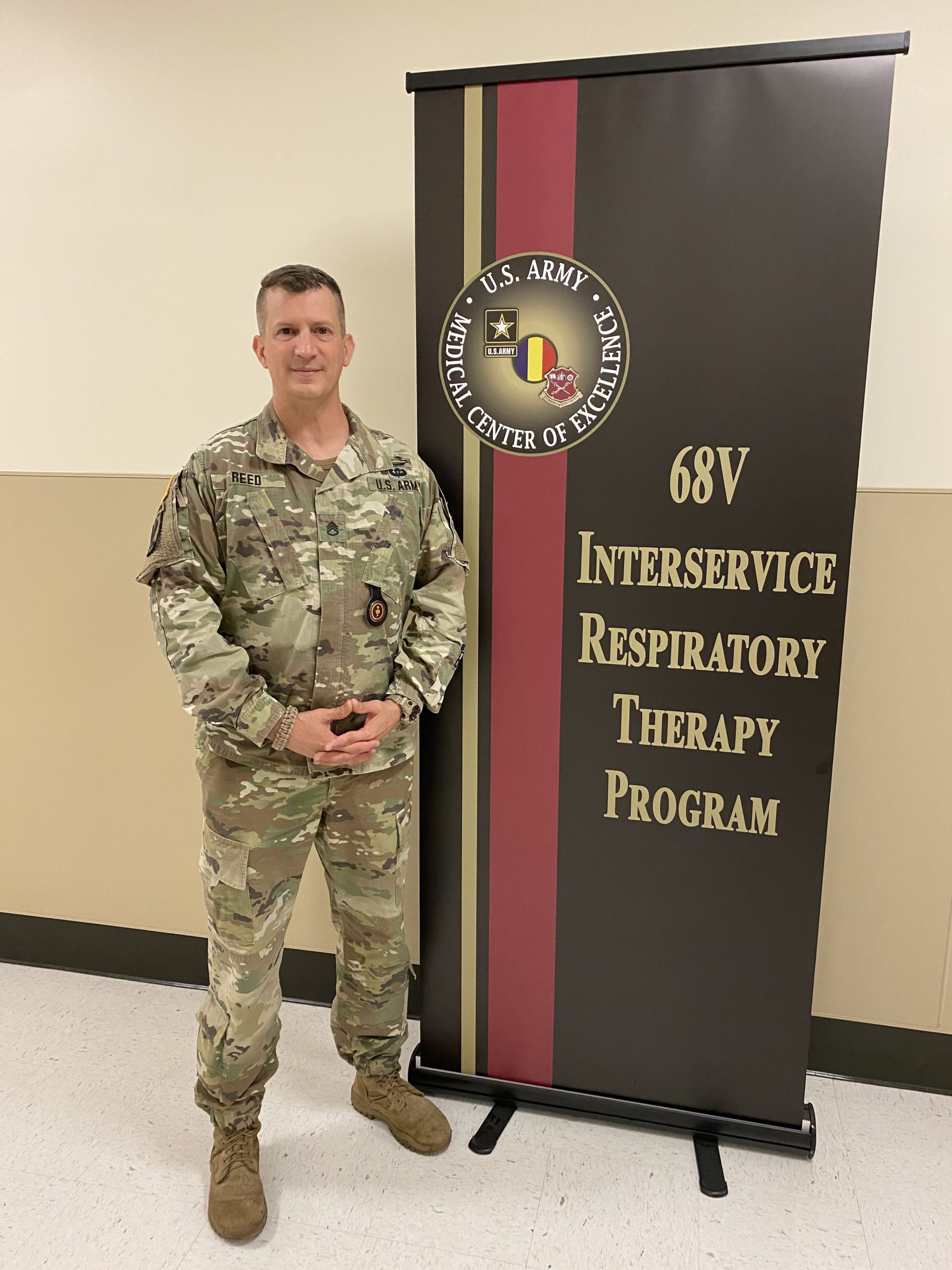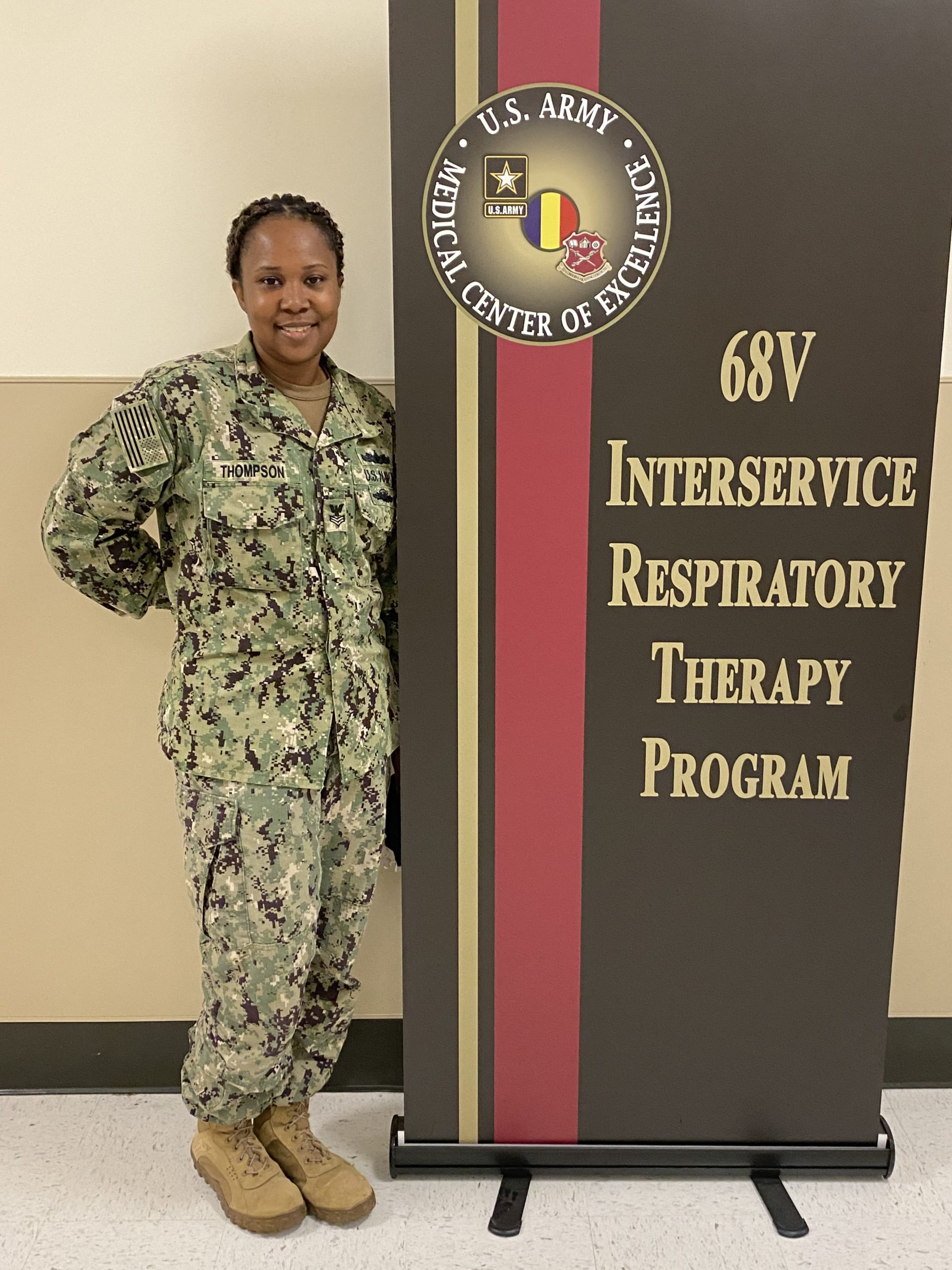
Veteran’s Day is a time to celebrate all of those who have served our nation in the U.S. Armed Forces. But for respiratory therapists, military RTs hold special significance for the care they provide to service members and their families, at home and in the heat of battle.
What’s it like to work as an RT in the military? Four of these brave service members — including one who holds the top rank for an RT in the U.S. Army — share their stories with us on this Veteran’s Day.
A perfect fit
Sergeant First Class (SFC) Jeffery Reed, RRT, didn’t start his military career as an RT, but once he discovered the profession, he was convinced it was where he needed to be.
 Army’s SFC Jeffery Reed who teaches in the interservice RT program at Fort Sam Houston.
Army’s SFC Jeffery Reed who teaches in the interservice RT program at Fort Sam Houston. “My transition to becoming an Army respiratory therapist began in 2014,” said SFC Reed. “CPT Mason Thornal, Chosen Company Commander, suggested I change my MOS from 11B Infantry to an MOS that would be more suitable to my character.”
“MOS” stands for “military occupation specialty” and there are 22 of them to choose from in the medical career management field. SFC Reed says his eyes were opened to the “Respiratory Therapy Specialist” MOS by a career counselor. He read through the requirements and realized that as an asthma suffer himself, he was perfect for the job.
“I was diagnosed with asthma as a young child,” he explained. “Proventil and theophylline medication ravaged my lungs to keep me from having respiratory issues, dyspnea, wheezing, and chest tightness.” As a young man living in California, he regularly had flare ups due to the pollens, pollution, and other airborne particles common in the area as well.
“I chose this profession to aid others who suffered from respiratory pathophysiology,” he said.
SFC Reed reported to Joint Base San Antonio in 2014, where he embarked on a rigorous 11 month interservice respiratory therapy program at Fort Sam Houston. His first assignment after graduation was at Carl Darnall Army Medical Center in Fort Hood, TX, an experience he recalls as a “trial by fire,” with rotations through the ICU, NICU, and ER.
Today he is an instructor in the program at Fort Sam Houston, where he is enjoying preparing the next generation of military RTs. Most recently, he has been volunteering his time on the weekend to Brooke Army Medical Center, helping to care for patients in the ICUs and COVID-19 units.
SFC Reed is a staunch supporter of all RTs in the service. “Military respiratory therapists are, in my opinion, the best trained, most versatile and adaptive individuals,” he said.
From dental technician to RT
Respiratory therapy wasn’t the first career choice for Navy Petty Officer First Class (PO1) Zeandria Thompson, RRT, either. She started out as a dental technician. But once she decided she wanted a skill that would not only pay well, but also transfer to the civilian setting, respiratory therapy seemed like the right choice.
 The Navy’s PO1 Zeandria Thompson who teaches in the interservice RT program at Fort Sam Houston.
The Navy’s PO1 Zeandria Thompson who teaches in the interservice RT program at Fort Sam Houston. She hasn’t regretted it. “My favorite part of the job are the patients,” she said. “I love interacting with them and seeing them progress in getting better.”
PO1 Thompson has deployed several times during her years in the service, and twice since she became a Navy RT. In 2018, she went to Northern Iraq, where she was the only RT in the region at the time.
“Our detachment was inside the ‘Golden Hour’ — we received casualties and were able to stabilize them and send them off to get further treatment,” she said.
Last year, she was assigned to the USS Theodore Roosevelt when the ship experienced its COVID-19 outbreak.
Like SFC Reed, PO1 Thompson is now an instructor in the interservice program at Fort Sam Houston. She agrees with her colleague that RT is a rewarding career. “I’m glad I made the decision to change my job over to become an RT,” she said. “It also can open up other doors, should you ever want to further your education.”
Filling a void
Master Sergeant (MSgt) Richelle O’Brien, BS, HCM, RRT, has been in the U.S. Air Force for 18 years now, ten of them as an RT. “I spent my first eight years working in aircraft maintenance and knew something was missing,” she said. “I wanted to make a bigger impact and always had this want to help people.”
 Air Force MSgt Richelle O’Brien has deployed to Iraq and Afghanistan.
Air Force MSgt Richelle O’Brien has deployed to Iraq and Afghanistan.Like her colleagues, she went through RT training at Fort Sam Houston and is now serving as a course supervisor for the program, teaching respiratory, pulmonary, and cardiology to about 75 new military RTs every year.
She brings lots of frontline experience to the job. Before becoming the course supervisor, she was deployed oversees several times, including to Iraq, Afghanistan, and Germany. “My first deployment, I was the RT on a mobile field surgical team that provided medical care for special operations,” she said. ”It brought point of care as close as possible to the injured.”
From there, she was assigned to one of the Air Force’s elite Critical Care Air Transport Teams. These three member teams, which consist of a physician, nurse, and RT, care for critically ill or injured patients aboard military aircraft.
“This mission allows the continuum of care to be expedited and we can get our soldiers to the care they need much more quickly,” she said. ”Think of it like an ICU in the back of an aircraft flying from Afghanistan to Germany then back to the states.”
MSgt O’Brien loves being a military RT and believes that while the training she received might be slightly different from that received by civilian therapists, caring for patients with cardiopulmonary needs has created a common bond.
“We are all RTs at the end of the day,” she said. “Only difference is where we get to practice our skills — from a dirty tent in the middle of nowhere, to the back of an aircraft, to the ICU in a military hospital. That experience brings forth a set of skills that only military RTs can obtain.”
Highest ranking RT
As Command Sergeant Major (CSM) with the 16th Hospital Center, 44th Medical Brigade, Gabriel Wright, RRT, currently holds the highest rank for any RT in the U.S. Army, serving as the advisor to the commander on all matters pertaining to enlisted soldiers in his unit.
 CSM Gabriel Wright is currently the highest ranking RT in the U.S. Army.
CSM Gabriel Wright is currently the highest ranking RT in the U.S. Army.“The CSM is charged with the readiness of the unit,” he explained. That includes making sure soldiers and their families are cared for, ensuring they are medically deployable, and that they have met all training requirements to meet the war time mission.
He also works to recruit new soldiers into the respiratory therapist MOS, sharing with them the many opportunities that exist in the field both inside and outside of the military. He believes a big advantage to Army training for RTs is that while the military doesn’t require RTs to be credentialed, everyone who goes through the program has the chance to sit for the RT civilian credentials prior to graduation.
That has come in handy during the pandemic, since military personnel who are deployed to help out in civilian hospitals need to be credentialed. He believes the day may soon come when the RRT is required for military therapists as well.
“A passionate group of military officers and NCOs are working on a proposal to have the RRT as a requirement for military RTs to maintain their MOS,” said CSM Wright.
CSM Wright believes his success as a military RT is rooted in the Army’s core values, which focus on being a leader and a follower at the same time.
“What I mean by that is, provide guidance, mentorship, and develop subordinates, but also accept the guidance, mentoring, and development provided by your superiors,” he explained.
 CSM Wright works with his fellow USAISR Burn Flight Team members to care for a patient during a transport from Germany to San Antonio.
CSM Wright works with his fellow USAISR Burn Flight Team members to care for a patient during a transport from Germany to San Antonio.He credits the diversity he has experienced during his 21-year military career — as a therapist he has worked with a wide range of patients, including those in U.S. Army Institute of Surgical Research Burn Center — for making him into the leader he is today. The ability to work closely with others to achieve goals has been invaluable too.
“Building a network of people who challenge each other both mentally and physically, build trust, and work towards bettering our formations and organizations displays the types of leaders needed for our military,” he said.
Lastly, he cites his willingness to focus everything he has on his current assignment as a key to his rise up the ranks. “Doing well in the positions that I have been assigned to and not looking for what’s next allowed me to perform to the best of my abilities while staying focused on the task at hand and striving for excellence,” he said.
CSM Wright wants his civilian colleagues in the profession to know this about military therapists: “Military RTs possess the same passion for our patients that they do in providing the best respiratory care possible. This passion is what drives us to care for our fellow military service members who we treat and care for at home in our military treatment facilities or in a deployed setting when the injured require our assistance.”
Thank You
We want to say thank you to all veterans and active service members. Your sacrifices, courage, and hard work are appreciated by all at the AARC.
Email newsroom@aarc.org with questions or comments, we’d love to hear from you.














